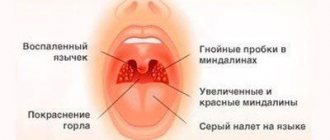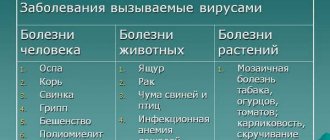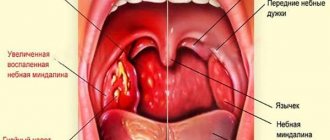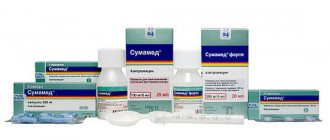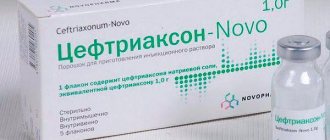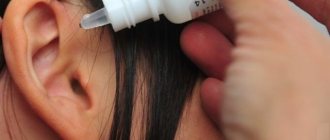The common belief that otitis media is a childhood disease is not entirely true. Inflammation of the middle ear is a rather dangerous disease, which is also common in adults. The consequences of the pathology can be irreversible if the disease is not treated on time. Complications can include partial or complete hearing loss and damage to the bone tissue of the skull.
Ear pain is the first and one of the most obvious symptoms that inflammation has begun to develop in the area of the eardrum, and treatment must begin immediately.
What is otitis media, the main symptoms and their duration
To roughly understand how long it takes to treat otitis media, you need to understand what this disease is. Essentially, this is an inflammation of the ear tissue, which is accompanied by unpleasant sensations, the formation of discharge, swelling and temporary hearing loss. It is impossible to say unequivocally in how many specific days otitis media goes away, since this disease has many forms and nuances in the course of the process.
It is worth noting the characteristics of the hearing organs in children and adults, as well as the tendency of children to frequent otitis media. The fact is that the Eustachian tube goes into the middle ear from the nasopharynx, which equalizes the pressure in the auditory cavity and ensures the outflow of excess fluid. With inflammation and the development of edema, these processes are disrupted. A child's Eustachian tube, which is shorter and more exposed to germs, allows infection to enter the middle ear. The baby’s already weak body cannot quickly cope with this problem.
The first symptoms of the disease are:
- temperature increase;
- feeling of fullness in the ear;
- nasal and ear congestion;
- hearing impairment;
- pain and discomfort;
- noise and autophony.
In both children and adults, the disease develops according to the same principle. Depending on how much and how severely the ear hurts during otitis, you can judge the form of the disease and roughly calculate the period of infection in the body. In acute inflammation, the entire process takes 3-4 days. Prolonged and chronic otitis media can last from several weeks.
It is more difficult to determine how long a small child’s ear will hurt with otitis media. He cannot explain his feelings, so you need to monitor the baby’s condition. You can verify that there is a problem in the following way: press on the tragus of the ear. With otitis media, the child will cry from the sharp pain caused by pressure on the cartilaginous process.
Deterioration in the perception of sounds during games, communication, etc. may also indicate a problem.
Otitis media
Otitis media
Acute otitis media lasts up to 3 weeks. The disease is accompanied by:
- significant deterioration in health;
- severe pain;
- hearing loss;
- high temperature.
The disease is caused mainly by staphylococci, streptococci and fungi, and is treated with antibiotics.
If the antibiotic is chosen incorrectly or the treatment regimen is violated, the process can become chronic. Chronic otitis media is considered a disease that lasts more than 2 months.
How long does otitis media last?
The effect of the antibiotic, which is sensitive to pathogenic microflora, appears already on the 2nd – 3rd day of treatment. The patient's temperature normalizes and pain decreases.
But as long as otitis media lasts, adults experience symptoms such as congestion and tinnitus, which lead to hearing loss.
In children, acute otitis media usually does not cause hearing loss. Most often, the child develops a purulent process, which causes the accumulation of pus in the tympanic cavity and rupture of the eardrum.
Then the pus of the tympanic cavity flows out, and the eardrum in children is completely restored.
In adults, the disease often becomes chronic. Especially if, with purulent inflammation, the patient interrupts the course of treatment ahead of time, since the pathogenic microflora will not be completely destroyed.
Otitis media then becomes recurrent; remission lasts as long as the immune system manages to restrain the growth of pathogenic microflora.
With proper treatment, taking antibiotics will take 5 to 10 days, depending on the type of infectious agent. Macrolides are prescribed for 5 days, fluoroquinolones are taken for up to 10 days.
Purulent inflammation
For purulent otitis media, the duration of treatment with antibiotics in adults should not be less than 7 days, and the entire duration of the illness should not be less than 10 days. If antibiotics are not used, the disease can be complicated by mastoiditis.
The duration of purulent otitis media in children is determined by the maturity of the child’s immune system. Purulent otitis of the middle ear takes longer to resolve in weakened children compared to how long the disease lasts in adults, but after 2 weeks it usually resolves.
Without antibiotic treatment, the infection can cause severe intracranial complications that are life-threatening.
Fungal otitis media is treated for 1 month or more. The disease is considered cured if the absence of fungi is confirmed by the results of three ear cultures.
Untreated inflammation in the tympanic cavity contributes to the development of hearing loss. How dangerous is the risk of complications of an ear infection, and how to properly treat otitis media, read in the “Ear” section.
Features of individual forms of the disease
When answering the question of how long otitis media will last, it is important to take into account the form of the disease itself. Let us highlight the following types of illness:
- outer;
- average;
- interior.
In both adults and children, the middle ear most often hurts. The inflammatory process can occur in acute, purulent and chronic form. In the first case, the disease develops rapidly, the symptoms appear intensely, but this form goes away in just a week.
How long purulent otitis will be treated depends on when treatment was started. In a few days, ordinary serous inflammation can develop into a purulent stage. It will take several weeks to eliminate the infection, remove pus and eliminate negative consequences.
Blocking the natural pathways for removing secretions complicates the situation and increases the duration of the disease. Congenital anomalies in the structure of the hearing organs and nasopharynx can provoke the development of chronic inflammation in both adults and children. The accumulation of pus in the pockets of the auditory cavity leads to a protracted disease. With chronic otitis media, symptoms may bother the patient for many months and then disappear during a period of remission. At the same time, the risk of a recurrent episode remains at a high level.
Otitis externa is easier to cure, since access to the affected area is more open. But internal inflammation is the most difficult to treat. The situation is aggravated by the fact that ordinary inflammation can provoke damage to the vestibular apparatus, cause labyrinthitis and lead to the development of hearing loss due to damage to the receptors.
Otitis externa
Otitis externa
Otitis externa occurs most easily in adults and is well treated without causing any dangerous complications. This disease is quite common and occurs with a frequency of 5 cases per 1000 people.
Most often, according to statistics, bacterial inflammation of the auricle is diagnosed in children 7–12 years old. There are two forms of the disease:
- limited (local);
- diffuse (widespread).
Limited form of inflammation
With limited external otitis, a boil forms in the auditory canal, the process is provoked mainly by a staphylococcal infection. Another common and dangerous causative agent of infection is Pseudomonas aeruginosa.
The boil, as it develops, goes through a stage of maturation, which is accompanied by acute pain. On the 4th day, the boil usually opens on its own. In this case, the disease lasts about a week and resolves on its own.
But, if the boil is not treated, several abscesses can simultaneously form in the ear canal.
With multiple lesions of the outer ear, the subcutaneous tissue and periosteum are involved in the process. Inflammation can spread to the middle ear and salivary gland.
Ulcers cause severe pain, block the auditory canal, impairing hearing, and increasing pain when chewing.
Treatment for multiple boils
If complications threaten, surgical intervention is resorted to:
- boils are opened;
- cleanse from pus;
- treated with antiseptics.
If you have to treat otitis in adults in such a way as surgery, then the pain symptoms subside, but the disease is prolonged additionally for as long as tissue restoration takes.
With several boils in the ear, pain after opening and inflammation may intensify. To prevent complications, the patient is prescribed an additional course of antibiotics.
It is difficult to predict how long antibiotic therapy will last, since the duration of treatment is determined to a large extent by the state of the patient’s immune system.
In the case of staphylococcal nature of the inflammation, there is a danger of furunculosis and suppuration of the lymph nodes. Treatment consists of antiseptic treatment of the abscess with antiseptic solutions and antibiotic ointments.
Diffuse form of inflammation
Diffuse external otitis is caused by infection of the skin of the auditory canal, mainly by Staphylococcus aureus, Pseudomonas aeruginosa, Candida fungi and molds.
Pathogenic microflora enters the tissue of the auricle through microscopic wounds caused by:
- insect bite;
- damage when cleaning earwax;
- wearing a hearing aid or headphones.
The acute form of diffuse inflammation is accompanied by:
- pain radiating to the head from the side of the sore ear;
- enlarged lymph nodes;
- insomnia;
- lack of appetite.
The acute process continues for 2 to 3 weeks.
The use of antibiotics shortens the time for symptoms to appear, but does not always completely suppress pathogenic microflora and lead to complete recovery.
Often, antibiotics are stopped as soon as the body temperature normalizes and the ear pain stops. This violation of antibiotic intake leads to the development of resistant strains of bacteria and chronicity of the process.
And if the disease becomes chronic, it can last for months or even years, gradually leading to hearing loss.
Fungal infections of the outer ear
It is difficult to predict how long otitis externa will last when infected with mold or Candida fungi. Fungal infections are difficult to treat even when using the most modern antimycotic agents in combination with antibiotics.
And as soon as the fungi colonize the eardrum, fungal otitis media becomes protracted and takes a particularly long time to treat. The patient is prescribed local and systemic antimycotics, and the duration of treatment is at least 3 weeks.
Fungal inflammations are, fortunately, less common than bacterial infections. In 65% of cases of fungal infections of the ears, the cause of the disease is the mold fungi Aspergillus, and in 35% - Candida fungi.
Therapy is considered successful if, a month after the start of treatment procedures, the clinical symptoms of the disease have disappeared, and tests do not confirm the presence of the fungus.
After recovery, the patient needs several more months, usually six months, to be monitored at a dispensary. You can learn more about the symptoms and treatment of otomycosis on the “Otomycosis” page.
Average treatment time
For adults, it is especially important to know how many days otitis media is treated. This determines how long a person will be absent from work and how long his sick leave will last. Typically, a period of 1-2 weeks is taken into account. It is extremely difficult to determine the exact timing, even if we consider a specific case.
The following factors influence how long otitis media lasts in each case:
- form and type of disease;
- timeliness of visiting a doctor;
- method of treatment and selection of medications;
- the use of auxiliary techniques, in particular physiotherapy;
- presence of concomitant diseases;
- features of the anatomical structure of the hearing organs;
- the presence of congenital pathologies;
- presence of chronic diseases;
- the level of the body's immune forces;
- the patient's lifestyle;
- compliance with hygiene standards;
- patient's age;
- compliance with restrictions on treatment time.
For young children, even ordinary otitis media can become a problem, since the body’s protective functions have not yet been sufficiently developed. For adults, a busy lifestyle, stress, irregular routine, health problems and bad habits can slow down the healing process.
With an optimistic prognosis, the ear can heal in just a few days, and without residual effects.
The accumulation of negative factors and extraneous influences increases the duration of treatment. In the absence of proper therapy and neglect of one's own health in general, otitis media can remain for life. In this case, we are talking about its chronic purulent form, which, among other things, can provoke the development of other pathologies of the hearing organs and lead to its complete loss.
Causes and symptoms of otitis media
Otitis extremely rarely acts as an independent disease. In most cases, the disease is a concomitant disease that occurs due to pathogenic bacteria entering the auditory cavity. Most often, ear inflammation is a complication of sore throat, pharyngitis, sinusitis or sinusitis. More often, otitis media affects people with weakened body defenses.
The symptoms of the pathological process are clearly expressed and cannot go unnoticed. Regardless of the specific form, otitis media is always accompanied by painful sensations. The disease may be accompanied by discharge from the ear of various types. The external form of inflammation is characterized by severe itching.
Information: acute otitis media is accompanied by elevated body temperature.
If otitis media does not go away for a long time
Depending on the form of otitis, the reasons why it does not go away for a long time may be different. The following situations are distinguished:
- Incorrect treatment. For example, for allergic otitis, traditional therapy can be used, which is only suitable for ordinary otitis, and, naturally, in this case has no effect.
- Weak drugs. The selection of suitable antibiotics is also of great importance, since instilling drugs into the ear, to which bacteria practically do not react, will not give any result, even after a week of intensive therapy.
- Weakened immunity. This is especially true for a child. A body weakened by disease is less resistant to infection, which makes treatment more difficult.
- Congenital and chronic pathologies. Some adults have diseases (for example, diabetes) that not only slow down the recovery processes in the body, but can also provoke the development of relapses.
Despite the fact that it is impossible to reliably determine how many days otitis media will go away, approximate periods allow you to navigate the situation. In case of a protracted course of the disease, it is necessary to determine the cause of this condition and begin searching for an alternative solution to the problem.
Treatment methods
At the first suspicion of otitis media (pain in the ear area, fever), immediately contact a specialist. If a small child falls ill and his condition does not improve within 2-3 days, call the doctor again. Before the doctor arrives, it is necessary to provide the patient with complete rest and apply an alcohol-based warming compress to the problematic ear at night.
Of course, how much otitis media is actually treated depends on the form and extent of the disease. If the disease is diagnosed on time and treatment is taken strictly according to the regimen specified by the doctor, the recovery process does not last long. On the third day there is relief, and after 5 days the disease disappears completely.
Otitis media needs to be treated correctly, and this also depends on the nature and classification of the disease:
- For the catarrhal form of inflammation of the middle ear in adults and children, warm vaseline or camphor oil is instilled into the auricle;
- An illness that occurs against the background of a cold or untreated rhinitis begins to be treated with a stuffy nose, using vasoconstrictor drops as medications;
- If purulent otitis media is diagnosed, the disease resolves only with complete elimination of the infectious process in the body. Treatment consists of cleaning the ear cavity from pathogenic purulent mucus;
- In cases where conservative therapy does not produce results and otitis media does not go away, the patient is prescribed surgery. Relief occurs immediately after excision of the vessels and release of the middle ear cavity from purulent contents.
In any of the listed cases, no matter how much the disease has to be treated, the pathology begins to recede as soon as treatment begins - taking the necessary medications and carrying out procedures.
Features of the course of the disease in children
Parents are concerned about how long otitis in children is normally treated. For young patients, some features of the course of the disease are highlighted. One of the most important factors is immunity. At an early age, defenses are just being formed, and therefore it is easier for the baby to catch an infection. It will take longer to deal with it than for adults.
Only certain types of antibiotics are used to treat a child. Do not abuse potent drugs. At the catarrhal stage, you need to give the child’s body the opportunity to cope with the problem on its own. The temperature can last for several days, but if it is within 38 degrees, there is no need to bring it down. How quickly immunity against certain types of bacteria is developed determines how long the child’s otitis media will be treated.
In general, we can draw a general conclusion regarding how long otitis media in children lasts on average. The acute form lasts 3-5 days, the serous form disappears in 5-10 days. If the ear begins to fester, more radical measures must be taken, otherwise the disease will drag on for months.
Causes of the disease
Otitis media is far from a harmless disease, and in order to assess the seriousness of the disease, it is necessary to understand the causes of its occurrence. Often inflammation occurs against the background of a cold or acute infectious pathologies associated with the nasopharynx. These include chronic tonsillitis, rhinitis and sinusitis of varying severity, sinusitis, pharyngitis.
Runny nose
But the main provocateur of the disease is an untreated prolonged runny nose. The edematous process in the nasal cavity affects the excess of mucous secretions, which easily penetrate into the organs adjacent to the nasopharynx, including the middle ear cavity. That is why the treatment prescribed by a doctor is necessarily based on knowledge of the primary source of the spread of infection.
To eliminate edematous and inflammatory processes, specialists begin with therapy aimed at suppressing the infectious process caused by the underlying disease, and only then move on to the treatment of otitis media.
Adenoids
Another reason for the development of the disease may be adenoids. These are pathological formations in the vault of the nasopharynx, partially blocking the nasal sinuses located next to the auditory tube. If adenoids tend to grow and interfere with air ventilation, experts recommend surgery as the main treatment. Surgical intervention is not performed in winter and spring, since vitamin deficiency at this time of year leads to large blood loss and prolonged wound healing.
ARVI
With acute respiratory infections, acute respiratory viral infections or influenza, the virus can attack the middle ear cavity. This type of otitis media is extremely dangerous because the formation and release of purulent secretion can become an impetus for the virus to enter the blood. And otitis in children that develops against the background of scarlet fever, diphtheria or measles is especially dangerous, since it very quickly becomes chronic, destroying the eardrum.
